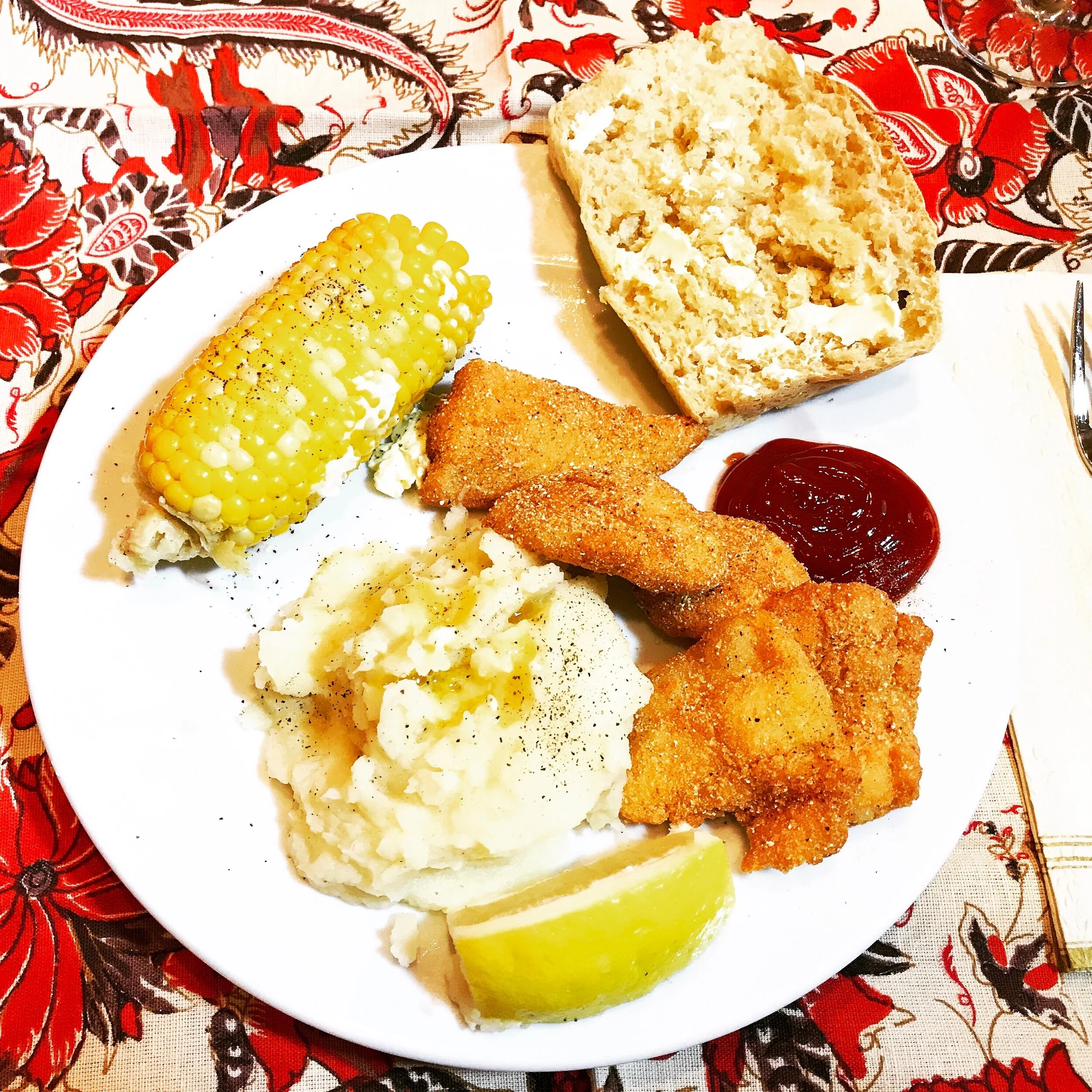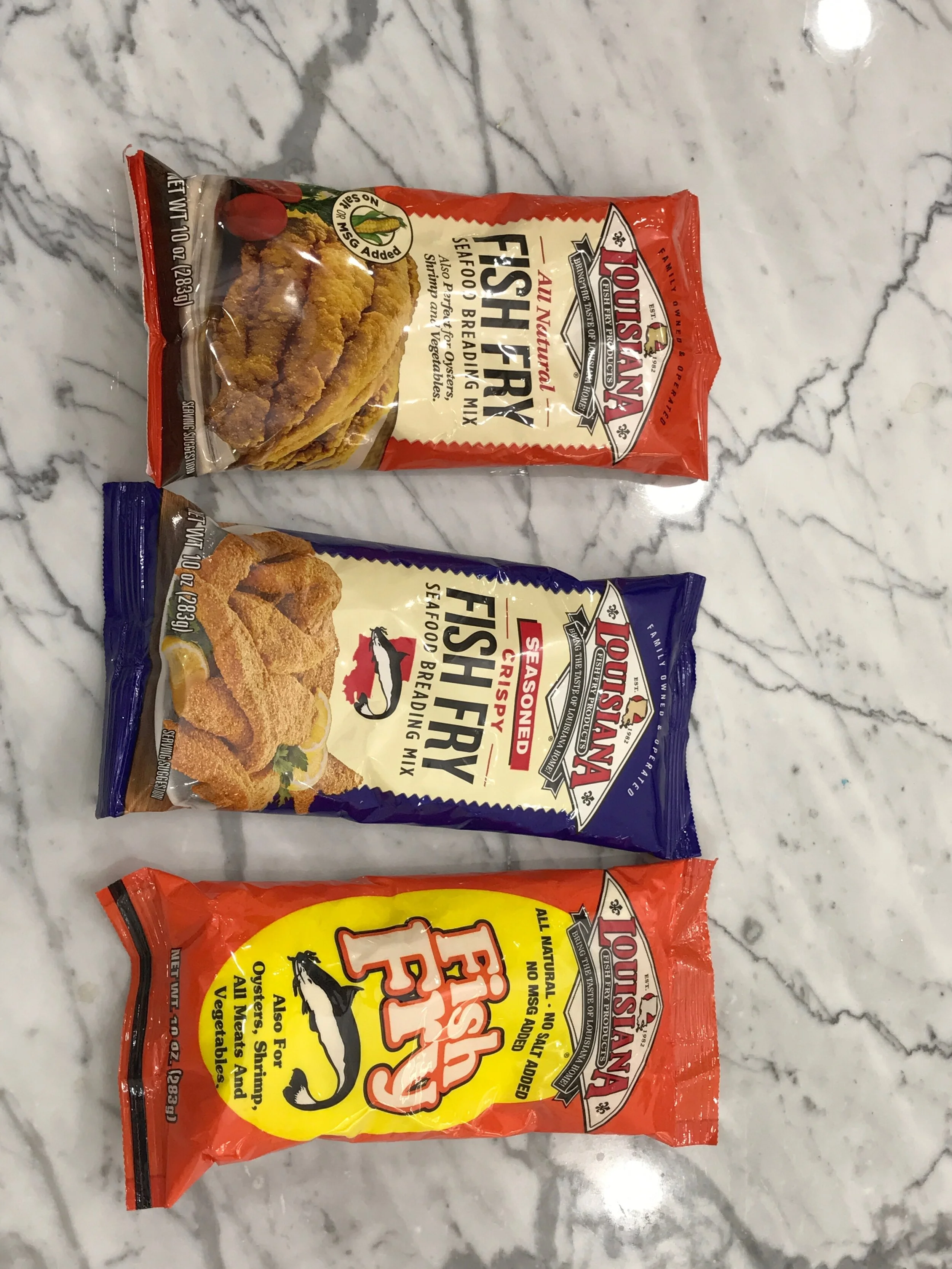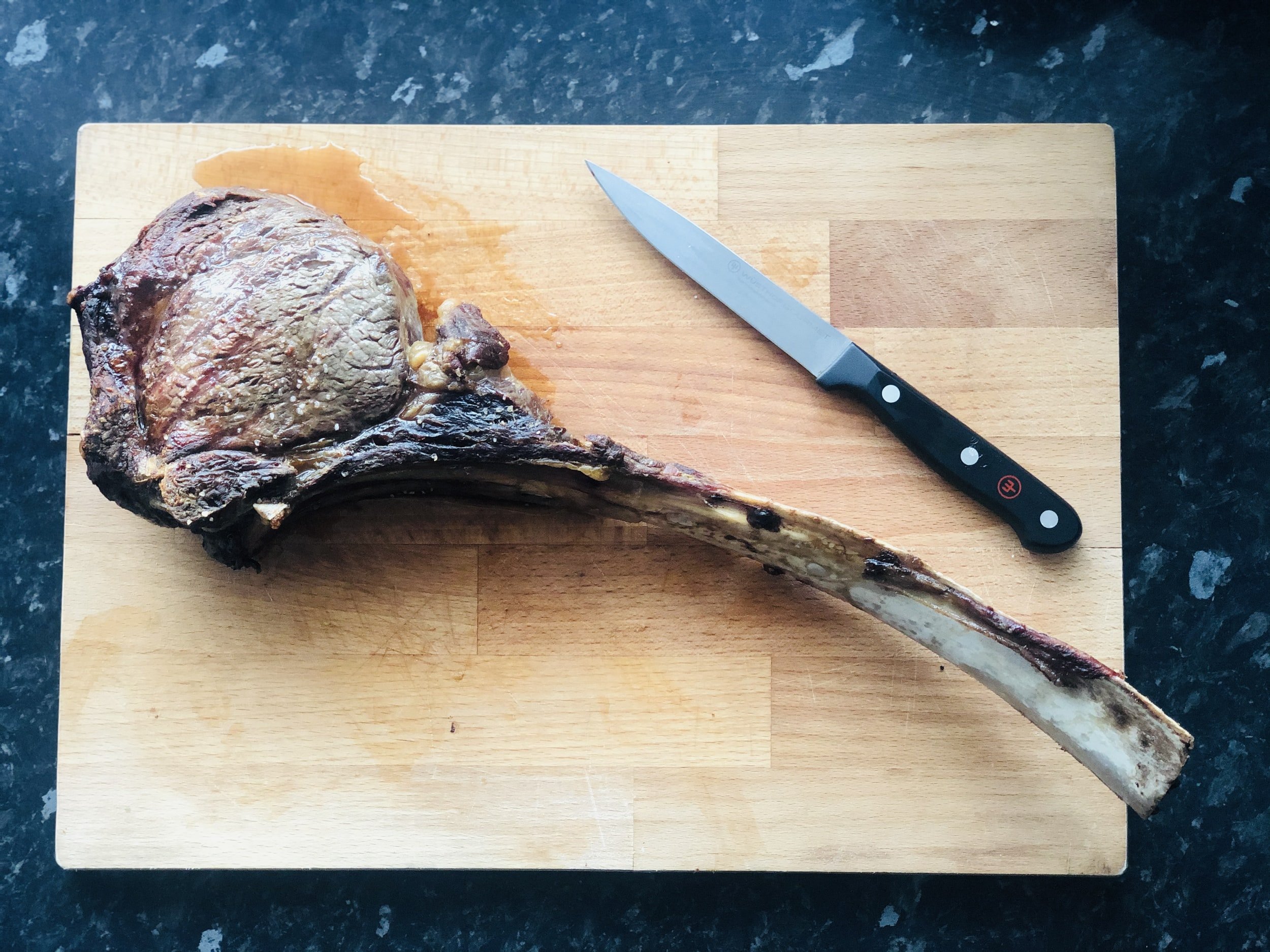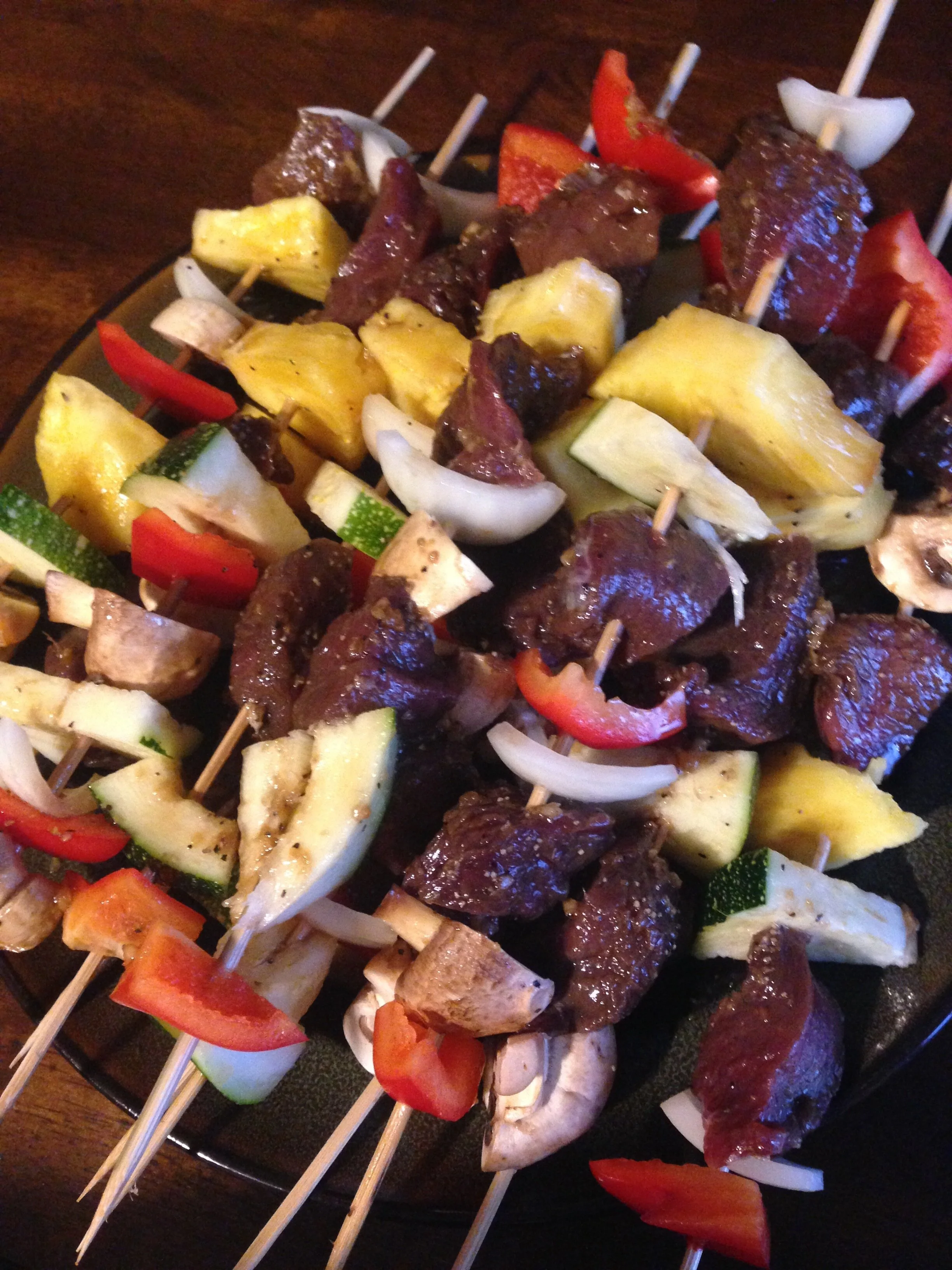Easy Steps Perfect Summer Fish Fry!
This is a picture showing some of the ingredients to make your Summer Fish Fry! a success. It shows two bottles of hot sauce, Trappey's and Louisiana. Ketchup, Louisiana fish meal, unseasoned and seasoned and some fresh fish filets.
Picture is a Fish Basket with fish biing fried. The picture on the left is pulled out of the hot oil and is still a little light colored and a bit under cooked. The right picture is the same fish, cooked a couple minuted later and they are golden brown and ready to remove.
Eddy's Kitchen: Summer Fish Fry!Prep: 45 minutesCook: 30 minutesFeeds: 4 to manyA Summer Fish Fry! is one of the simpler meals you will ever cook. It never ceases to satisfy and please the crowd. But you have to pat attention to the details!Before we go any further, let's get one essential ingredient: FRESH fish. Any species you like can work, but I find the white flesh types like crappie, walleye and speckled trout best. They must always, always, always be fresh! Put fish on ice as soon as you take them off the hook. If you can't fry them the same day, seal them with a vacuum packer and freeze immediately.Now, with fresh fish in hand, you're ready to start your magic!First, choose a cooking oil. I like Crisco Vegetable oil. It is light and does not leave a flavor. Peanut oil and canola oil have higher smoke points, but I watch my temperature closely with the Crisco and am happy with it.Second, choose a moistening coating. Water, milk, mustard, and my favorites, Louisiana Hot Sauce and Trappey's Red Devil Hot sauce, neither of which are all that hot. They contribute just enough spice to enhance the fish flavor without burying it.Third, select a coating. I mix 2/3 cornmeal and 1/3 flour, garlic salt and pepper for a simple coating. I also like pre-mixed Louisiana Fish Fry Products coatings, often mixing 1/4 of their seasoned mix with 3/4 unseasoned. If you use the unseasoned Louisiana Fish Fry Product alone, add a little garlic salt and pepper to taste, but remember Eddy's admonishment: "You can always add spices, but you can not take them out!"Fourth, size your fish pieces to be no thicker than about 1 inch. I like 1/2-inch. Thicker pieces will need a slightly lower frying temperature and longer time. Thinner pieces fry through more quickly and dry out if you're not careful. Keeping all pieces close to the same thickness makes your work easier. Oil temperature should be from 325 to 375 to keep the fish from becoming too greasy on the low side and burning on the high side.Fifth, select your frying container. This can be a frying pan or even a fairly deep kettle (reduces splashing.) Get one thick enough for consistent heat distribution. I recommend a cast iron Dutch Oven big enough to hold a metal fry basket with slots or holes as opposed to screens, which are harder to clean. A basket like this makes draining and lifting the finished fish from the oil much simpler.A great cooker option is a complete outdoor fish frier like this one. It has everything you need and simplifies clean up by keeping the mess outdoors. I put a piece of cardboard under the cooker and all my pans and bottles. I then cover the cardboard with old newspapers 2 to 3 sheets thick. This makes cleanup quick and efficient. SAFETY WARNING: Keep children away from the frier and never leave it unattended. Keep heat mitts and a fire extinguisher nearby and pay attention. Fun and conversation during fish fries tends to distract the chef, and that can lead to "boiling oil" disasters. Be prepared to deal with hot metal, spilled oil and fires.One more hint: Get a long handle straining spoon clear your oil of floaters and overcooked bits of fish and coatings between batches. Your oil will stay clean and useable for many more batches.For more hints and tips to make your fish fry easier, watch my how-to video here on YouTube Eddy's Kitchen.Ingredients for a Summer Fish Fry!Fresh fish filets. Cut to uniform thickness. Cut any dark meat (near the center of the fillet) from light meated fish to reduce the oily, fishy flavor.)Coating: Homemade or Louisiana Fish Fry Products.One 12 oz. bottle of Louisiana Hot Sauce or Trappey's Red Devil Cayenne Pepper Sauce. (This is enough to coat 7-10 lbs.Crisco Pure Vegetable oilLemons (If you like a spritz of lemon on your finished fillets,) ketchup and tartar sauce. PreparationPour in enough Crisco to cover about 1 1/2-inch of the fry basket.Clip a 12-inch cooking thermometer to the side of the pan.Heat the oil to 350 degrees.While the oil is heating, get one or two batches of fish ready. Use a medium bowl and add about 1 1/2 to two pounds of fish filets. Shake the hot sauce and role the fish until covered. No need to have free standing hot sauce in the bowl, just enough to cover all the fish and get it wet.In another bowl, a larger one, mix a whole bag of All Natural (unseasoned) Louisiana Fish Fry with about a third but no more than a half of a bag of Louisiana Fish Fry seasoned meal. Put the filets with the hot sauce on them 2 to 4 at a time in the meal and roll them around with one hand to get them coated to the point they look dry. Put them on one side of the large bowl containing the meal and repeat until you have about a pound ready.Once the oil is at 35o, pull the thermometer and basket out of the oil. Careful, all will be hot! You can see in the video I have another cast iron pan lined with paper towels and I put the fry basket in this pan. Layer the bottom of the fry basket with the filets. Don't stack more layer. One layer at a time and cook the fish in batches.CAREFUL! Water reacts vigorously to hot grease. It will vaporize and splash hot grease on anything around it. When you lower the fry basket into the hot oil, go slowly and stop when the oil just covers the fish. It will be boiling vigorously. Hold it there for 20 to 30 seconds and then lift the fry basket gently out of the oil or 10 to 15 seconds. Now lower it back into the hot oil and, with the water boiled off, it will cook more gently.It will take a little work to keep the temperature around 350F. The fish are cool and the frying process itself will be transferring heat to the air and to the fish. This is where the Dutch Oven is so nice. It will help hold the heat. Turn the heat up a bit when the fish are first submerged and back off a little as they get to cooking. I reinsert the thermometer and clip it to the side of the pan while cooking. Careful not to insert into a piece of fish or you'll be recording the fish temperature instead of oil temperature. Rule of thumb is to fry for 10 minutes per inch of thickness. My filets will be 3/8 to 3/4 inch thick, so 5 to 10 minutes for a batch. No need to stir or try to flip. Some of this will be more art than science. You want the fish to be cooked through but not under or over cooked. Chef's privilege to taste test throughout the frying process!I use foil pans lined with paper towels to dump the cooked fish in. Put a cover of foil over half to three-quarters of the foil pan and after each batch, hold the pan and shake a little so the fresh fish falls under the foil coved portion. Place another two paper towels in the open portion to dump the next batch on and repeat until the fish are all cooked. I will use two or three foil pans prepared this way if I have a bigger batch to fry and I try and get the crowd eating while the fish are hot!Clean the oil carefully and quickly with the strainer between batches. I keep a double paper bag with a few old paper towels thrown in the bottom to quickly dump my strainer in after each pass. After you've fried three to four batches of filets, you may need to add a little fresh oil. Give it time to reheat to 350F.As you can see cooking a Summer Fish Fry! is a dynamic and involved process. It is not hard but takes a hands on approach.Serve sides and condiments you enjoy with the fish. Experiment with the fish meal you like but keep it simple and light to start with. Fresh fish should be the main focus of a Summer Fish Fry! I tried to relay a lot of information and as you can see the 'simple' fish fry has many tentacles. I have several fryer set ups and for bigger groups I will set up a second or even third fryer. Follow my hints and watch the video and your first big fish fry should be a rousing success. https://www.youtube.com/embed/AhW3jHR_SAc








